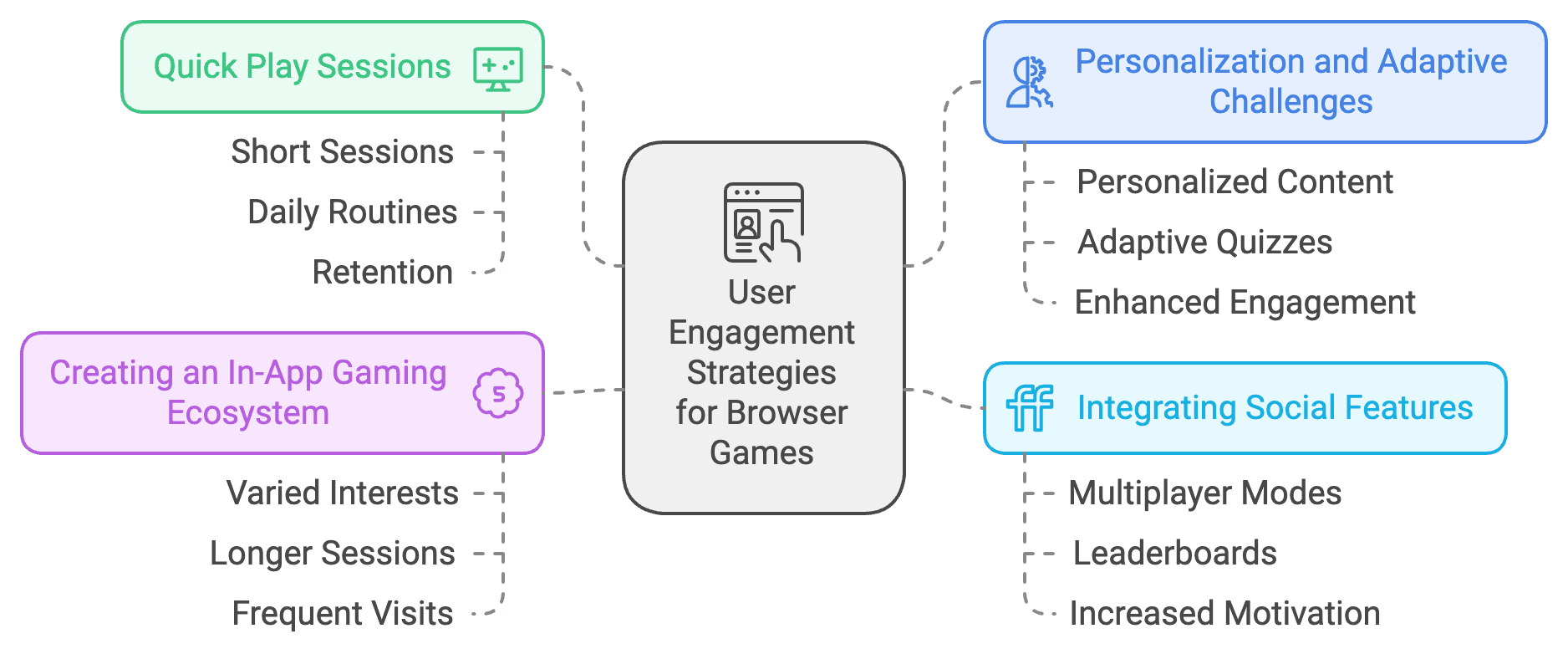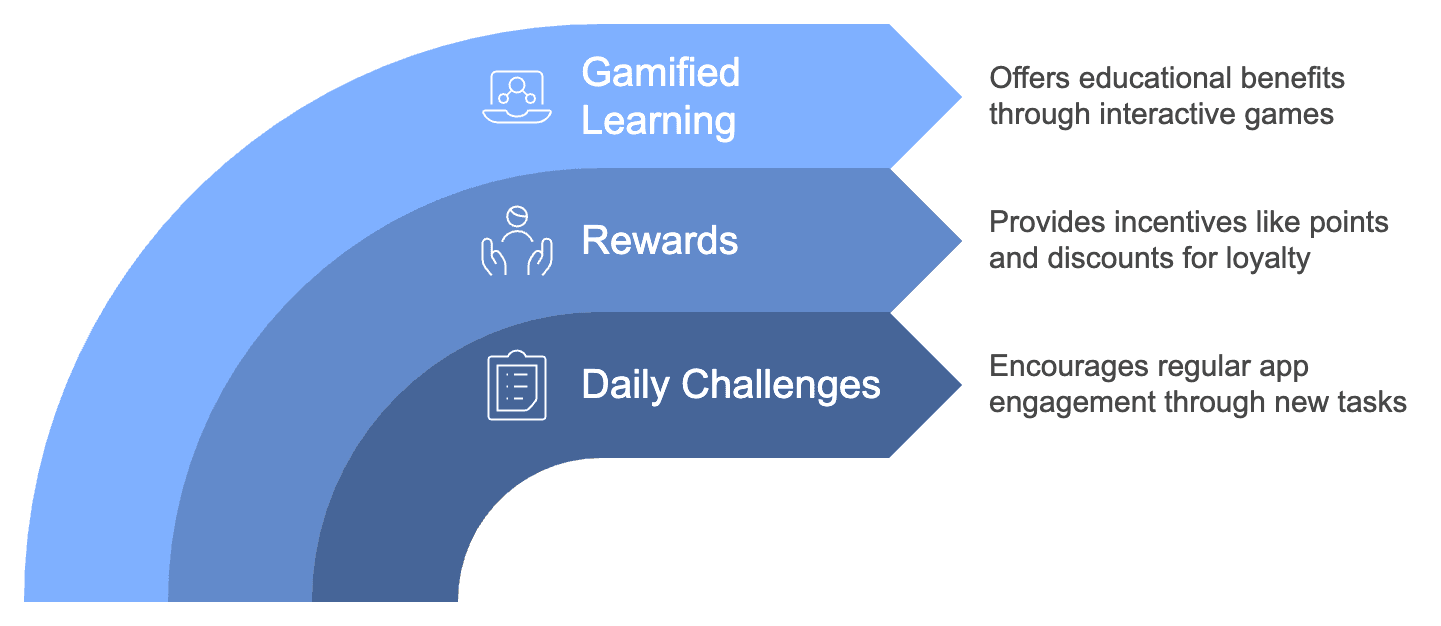Boosting User Engagement with Browser Games: A Game-Changer for Apps
User engagement is a critical metric for apps across industries. With the growing popularity of browser games, app developers and businesses are discovering new ways to captivate users and keep them coming back. Browser games—easy to access, fun to play, and built for repeat visits—have emerged as a powerful tool for enhancing user engagement. In this article, we’ll explore how browser games can boost engagement, the role of gamification, and strategies that make these games a game-changer for apps.
Why Browser Games Are Perfect for User Engagement
Browser games, particularly those built on HTML5, are designed to run smoothly across devices, requiring no downloads and minimal setup. Users can start playing within seconds, which has become an important factor in today’s on-demand world. For app developers and businesses, the appeal lies in how these games make it easier to keep users actively engaged.
Nearly half of all users reportedly avoid downloading new apps due to concerns about storage and download fatigue. Browser games eliminate these concerns entirely, as users only need an internet connection and a compatible browser. This instant accessibility encourages users to try the game, and often, to return for repeat visits. Engagement is tied closely to how easily users can access content, so by lowering barriers, browser games create a seamless experience that draws users in from the moment they click “play.”
Gamification: Turning Engagement into Habit
Gamification—the process of adding game-like elements such as points, achievements, and rewards to non-game contexts—has proven to be a strong motivator for user engagement. Browser games are an ideal way to introduce these gamified elements in a way that feels natural and fun. By integrating challenges, leaderboards, and rewards, these games encourage users to log in frequently, complete new tasks, and feel a sense of accomplishment along the way.
Gamification works by providing rewards and immediate feedback, which taps into fundamental human motivations. For instance, features like point scoring, badges, and achievements provide users with immediate gratification and an incentive to continue playing. Leaderboards and social sharing encourage users to engage further by competing with friends or other app users, tapping into a natural desire for connection and recognition.
In one study, adding gamified learning tools increased knowledge retention by nearly 30%. This effect isn’t limited to education alone—by delivering feedback, rewards, and a bit of competition, browser games create a compelling environment for engagement and loyalty in any context.
User Engagement Strategies with Browser Games
Browser games open up opportunities to implement effective engagement strategies that go beyond simple interaction. Here are some key strategies to maximize user engagement with in-app games:

Quick Play Sessions
Browser games are perfect for quick play sessions that users can fit into their daily routines. Whether it’s a five-minute puzzle game during a break or a quick quiz, these games give users an enjoyable way to spend a few minutes and feel accomplished. This approach aligns with recent data showing that the average mobile gaming session lasts around eight minutes, making short, easy-to-play games particularly effective for retaining users who may not have much time.
Personalization and Adaptive Challenges
Personalizing games or tailoring challenges to fit the skill level of each user makes them more engaging and immersive. For instance, an educational app could offer adaptive quizzes that adjust in difficulty based on the user’s past performance, giving them an experience that feels just right. This adaptive approach not only enhances engagement but can also improve retention, as users feel that the content is “designed for them.”
Integrating Social Features
Social features, like multiplayer modes or community leaderboards, take browser games to the next level by adding a collaborative or competitive component. With leaderboards, users can strive to reach the top and see how they rank compared to others, adding an extra motivation to return to the app. Research shows that these social features boost engagement by around 30%, as users feel more connected and invested in their progress within the app’s community.
Creating an In-App Gaming Ecosystem
Some apps take engagement even further by creating an ecosystem of different browser games to appeal to varied interests. For example, by offering choices such as trivia, puzzles, and strategy games, an app can increase the likelihood that users find something they enjoy, which encourages longer session times and more frequent visits. By mixing up the content, apps can keep the experience fresh and engaging.
Browser Games as a Tool for Building Loyalty
Beyond increasing engagement, browser games can play a key role in building brand loyalty. Users who feel connected to an app’s content are more likely to return, recommend it to others, and even make in-app purchases. Games offer an interactive way to reinforce this connection, especially when they include daily challenges, rewards, or other incentives.

Daily Challenges and Rewards
Daily challenges are one of the most popular loyalty-building strategies. By offering users a new task or game each day, apps can encourage them to log in regularly and work toward achieving specific goals. Rewards for completing these challenges, such as points, badges, or discounts, create a positive reinforcement loop that keeps users coming back.
For instance, a fitness app might offer a daily step-count challenge within an HTML5 game, where users earn points for achieving their goals. Over time, these points could unlock additional app features or discounts on related products, giving users an ongoing incentive to stay engaged.
Gamified Learning and Skill Development
In addition to entertainment, many browser games also offer educational benefits. For apps focused on learning, productivity, or personal development, games can provide users with opportunities to acquire new skills while enjoying the experience. Research has shown that gamified learning can improve retention by 30%, highlighting the value of interactive, game-based learning as a strategy for keeping users engaged.
Educational apps, for example, can use browser games to teach users new concepts or reinforce existing knowledge in a fun way. By incorporating progress tracking, milestones, and rewards, these games make learning enjoyable and more engaging, helping users feel a sense of achievement with every step.
How Guul Enhances User Engagement with Browser Games
Guul has successfully integrated browser games into its platform, offering a gamified approach to user engagement that’s flexible, accessible, and engaging. By providing a variety of HTML5 games suited to different skill levels and interests, Guul creates a platform where users can connect, compete, and collaborate naturally.
Cross-Platform Compatibility
Guul’s browser games work seamlessly on any device, allowing users to engage with the content no matter where they are. Whether they’re using a mobile device, tablet, or desktop, users can easily access Guul’s games and pick up where they left off.
Variety of Games to Suit All Users
Guul offers a wide range of games—such as word puzzles, chess, and trivia—appealing to different interests. This variety ensures that users have options that fit their preferences, which increases the likelihood of repeat visits. Guul’s games also come with features like leaderboards and multiplayer modes to enhance the experience.
Encouraging Friendly Competition and Team Bonding
Through team challenges, leaderboards, and rewards, Guul’s games create an environment that promotes friendly competition and connection. By encouraging users to work together or compete, Guul’s platform not only boosts engagement but also fosters team bonding, helping users feel more connected.
Key Takeaways
- Browser games offer an accessible, cross-platform way to engage users without requiring downloads.
- Gamification elements like leaderboards, points, and daily challenges encourage users to return regularly.
- Social and adaptive features in browser games create a collaborative and personalized experience that increases engagement.
- Guul’s approach to browser games includes varied games, team challenges, and an easy, cross-platform experience to enhance user engagement.
Frequently Asked Questions
Q1. How do browser games increase user engagement? Browser games provide a seamless, interactive experience with gamified elements like leaderboards and rewards, encouraging users to return frequently.
Q2. Why are HTML5 games popular for app integration? HTML5 games work across devices without downloads, making them convenient for app integration. They offer smooth, responsive gameplay on mobile, desktop, and tablet.
Q3. How does gamification improve engagement with browser games? Gamification adds elements like points and badges, which provide users with incentives to play regularly and engage further.
Q4. Can browser games help build user loyalty? Yes, features like daily challenges and rewards encourage regular visits, which helps build long-term loyalty.
Q5. How does Guul use browser games to enhance engagement? Guul offers browser games with social, multiplayer, and reward-based features, creating an engaging and community-driven experience.





